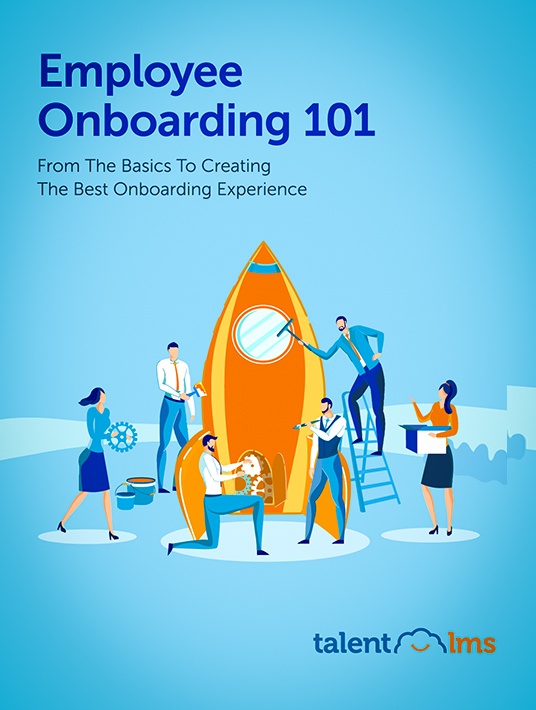Too Much Or Too Little Information
There are many onboarding challenges ahead of you. Too little information will prove insufficient. Your new hires should have all the basic information to orient themselves. But basic information isn’t enough for them to function well in their role, or in the company as a whole.

On the other hand, too much information can be overwhelming. Explaining the role of the various company departments is one thing. But presenting each of the 2000 employees’ names and specific, detailed roles to your new hires during onboarding will probably be frightening. What is more, you can’t really expect them to retain all that information.
A balance in the quantity of the information your employee onboarding program provides is key to how your new hires will feel after the onboarding experience is over. Whether too little or too much, the wrong amount of information will let your newly hired employees feel confused. At the same time, it might create the impression that your company isn’t experienced in how to orient its members, which in turn will create a negative early impression. And, to new hires, early impressions matter.
The information problem is a tough one to crack, but it can be tackled a lot more easily during the right step of the planning process. While planning out your onboarding program, remember to double-question the amount of information you’ve added to each day—or even hour—of your schedule. Question whether a newly hired person with no knowledge of your company’s mechanics or culture can retain all the information you have provided. Or, on the other hand, if the information is insufficient for your new hires to fully understand the topic you’re laying in front of them, whether that’s the meeting schedule or their role outline.
The Right Onboarding Content For The Right Roles
The quantity of the information you provide is important. But it’s not the only thing you need to look out for. Even if you haven’t provided too much or too little content quantity-wise, is it the right information for your new hire? Or could it be an overkill? Should, for example, your newly-hired customer support agent learn the names of your 500-people sales team on their second day? And is it really more important than the other onboarding challenges they will be facing?
Onboarding programs should be tailored, to some extent, to the job role of your new hires. Some information applies to everyone. Both sales and management teams, for example, should know how the company is structured, who the HR manager is, or how long the lunch breaks last. But not all information is equally important, or useful, to all your staff. Mary from IT, for example, probably doesn’t need to know how to edit a blog post. And Adam from sales shouldn’t be required to know how to troubleshoot complex technical issues on his laptop.
Providing your newly hired team members with information they don’t need, and will probably never need to use, will overwhelm them, and might even lead to boredom and frustration. Keep in mind that this is a very critical time for the company-new hire relationship. If a fresh team member forms the impression that you provide them with irrelevant information, they might think you don’t know how to guide them. Even worse, they might get the impression you’re preparing them for a role far different than what was promised. And that will lead to lower employee retention.
Early checks during the creation of your onboarding process will prevent your company from falling too deep in that pitfall. It is important to be fully aware of what your new hires need to know based on their specific role and experience. A Subject Matter Expert can be incredibly important at this time. The manager of the team the new member will be assigned to will also prove helpful toward that goal.
Overcoming Onboarding Challenges In A Time-Sensitive Environment
It might come as no surprise that the amount of information is only one of the onboarding challenges your company will face. Aside from how much information you put in your program, you should also be aware of how short or long it is.
Is a two-day onboarding process, for example, enough for the employees to get familiar with their role and your company’s expectations? Given the fact that the first day is always an introductory—let alone overwhelming—day, a two-day process might be severely insufficient.
On the other hand, if your onboarding process drags on for a year, you might want to reconsider. While it’s important for your new hires to be fully in the loop, a long process keeps them away from their role for too long, creating feelings of resentment and even boredom.
While the length of your onboarding process is defined during the planning phase, there are still ways to remedy a less-than-perfect onboarding length. Create a feedback phase after the actual onboarding process has ended.
Asking your employees the right questions will help you determine how much the onboarding duration helped or hindered them. If the results show that your onboarding program is too short or too long, go back to the planning phase and restructure. The feedback phase will also help you see what topics weren’t covered or were too detailed, which will help you adjust your content—and that way, the duration—accordingly.
Employees Aren’t Familiar With Your Training Platform
You’ve created a well-thought-out program. The information you’ll use is valuable and exactly what the new hires need, and the process length is tried and tested. But where exactly are you going to provide all this information? If you decided to use a training platform, are the new hires familiar with it?
Not many things are more stressful on the first days of a new job than having to fumble with the company software. Having to train using a platform they’re not familiar with will make your new employees feel anxious and that is a bad first day.
But that’s not all. Not knowing how to navigate in the training platform will not only stress the employees out. It will also create a potentially serious time lag since a great percentage of their time will be spent on figuring out how to access their program instead of actually using it.
After determining what training program you will use for your onboarding process, remember to ask yourself if you’ve provided enough information on how your employees will use it. Remember to not take everyone’s computer knowledge for granted. Some employees might struggle more than others, and part of your onboarding experience is to make them feel more at ease.
To achieve that, start by choosing a user-friendly, intuitive training platform. After that, create a basic outline of how to use the training software, or provide them with a ready-made one from your vendor. Try to make training as user-friendly as possible. Assigning someone to help them during the process will also help shorten the adjustment time. Lastly, it would be a good idea to clearly communicate to them that they can ask for help at any time during the process.
Keeping It Consistent With Your Onboarding Program
Onboarding isn’t, and shouldn’t become, a strict and scary regime. It’s natural that there will be some unexpected events in between. Whether those are company meetings you feel the new hires would benefit from attending or a training session for the whole team you don’t want the new employees to miss out on, these are natural occurrences. After all, the onboarding process doesn’t stop the rest of the company from carrying on business as usual.
But there is a fine line between valuable interruptions and total disruption of the onboarding process. A couple of team meetings here and there probably won’t hurt all that much. But a couple of meetings a day—or even every week—are going to create a serious problem to your onboarding program.
Disruptions of the onboarding experience can potentially lead to confusion. Imagine being a new hire in the customer support team, and having to attend constant meetings on troubleshooting issues you have no idea about yet. Far from ideal, right?
To avoid such disruptions, make sure that you communicate to the managers of your new hires that they need to remember to include them only in meetings that are necessary. The managers will have to be in sync with what the new team members have already got familiar with, so everyone is in the know. And if the situation arises where the manager believes their new team members must absolutely attend a meeting they have no full knowledge on? Then the manager should be responsible to brief the new members on what they need to know beforehand.
More Tools To Help You Overcome Onboarding Challenges
The onboarding process includes some tricky challenges, like choosing the right information for your new hires and sticking close to your onboarding schedule. But with proper caution during your planning and the right remedy steps, these are things you can definitely avoid. Download our eBook "Employee Onboarding 101: From The Basics To Creating The Best Onboarding Experience" to learn more.


